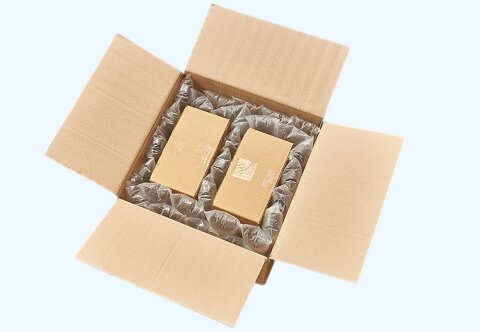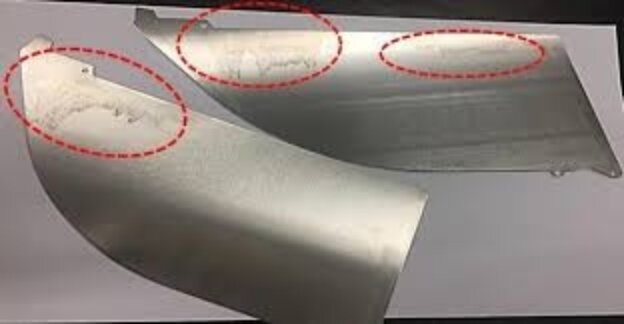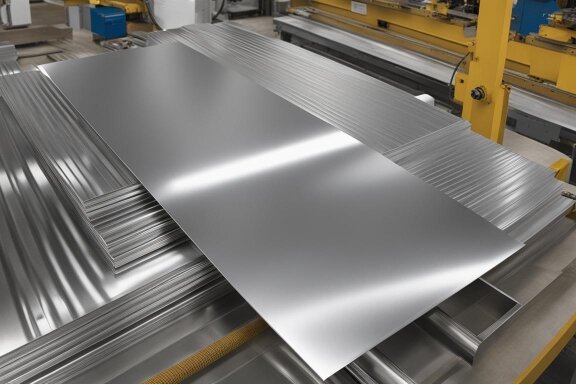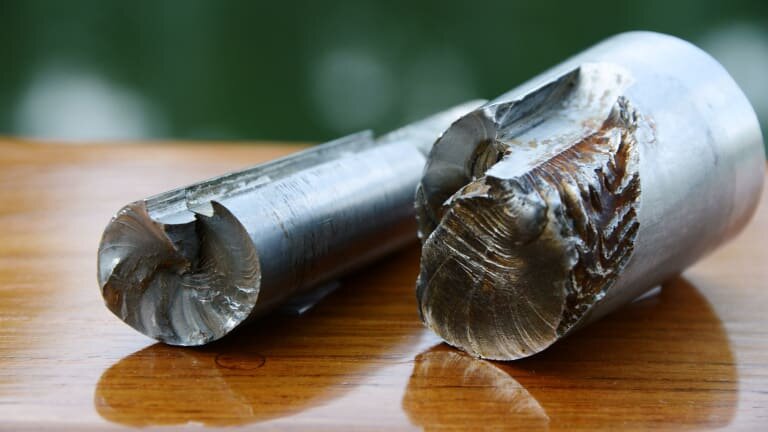يتطلب التصنيع مواد تدوم طويلاً. ويواجه المهندسون ضغطًا مستمرًا لاختيار المعادن التي تقاوم التآكل، وتؤدي أداءً جيدًا وتبقى في حدود الميزانية. يلبي الفولاذ المقاوم للصدأ 304 هذه الاحتياجات من خلال الجمع بين القوة والمقاومة الممتازة للصدأ. هذه الرتبة هي أكثر أنواع الفولاذ المقاوم للصدأ استخدامًا في العديد من الصناعات.
هل تريد أن تعرف ما الذي يميز هذا المعدن؟ دعنا نلقي نظرة على ميزاته الرئيسية واستخداماته الشائعة في التصنيع.
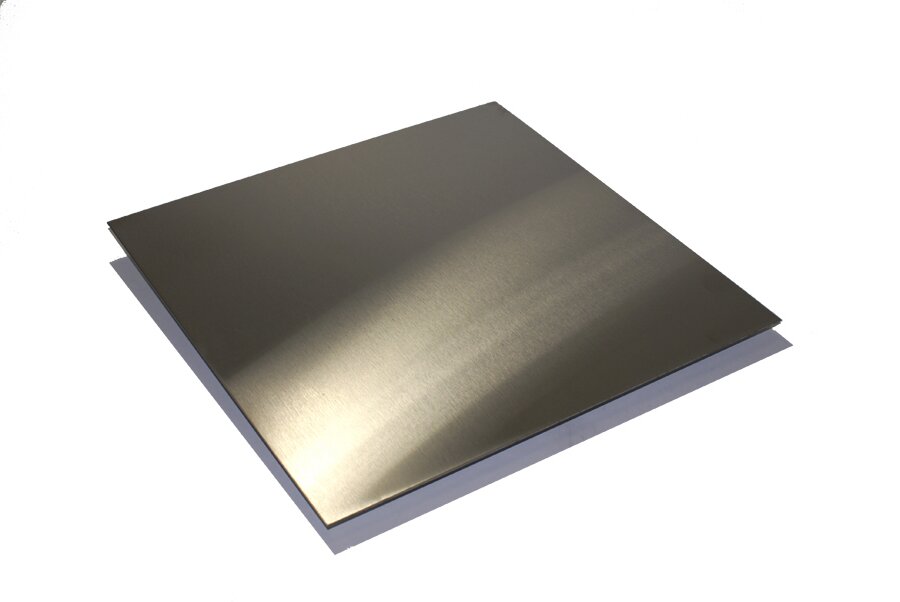
ما هو الفولاذ المقاوم للصدأ 304؟
304 الفولاذ المقاوم للصدأ 304 عبارة عن سبيكة أوستنيتي تحتوي على 18-201 تيرابايت 3 تيرابايت كروم و8-10.51 تيرابايت 3 تيرابايت نيكل، وغالبًا ما يطلق عليها "فولاذ 18/8". وتمنحه هذه التركيبة مقاومة ممتازة للتآكل وقابلية تشكيل جيدة وقوة عالية.
وعادة ما تكون غير مغناطيسية ويمكن تشكيلها أو لحامها بسهولة دون أن تفقد خصائصها. وتناسب المتغيرات مثل 304L (منخفض الكربون) و304H (عالي الكربون) الاحتياجات الخاصة مثل اللحام أو البيئات ذات درجات الحرارة العالية، على التوالي.
تركيبة الفولاذ المقاوم للصدأ 304304
يُعرف الفولاذ المقاوم للصدأ 304 بتوازنه بين القوة ومقاومة التآكل وقابلية التشكيل. دعونا نحلل تركيبته الكيميائية وأدوار عناصر السبائك المختلفة.
التركيب الكيميائي
يتألف الفولاذ المقاوم للصدأ 304، المعروف أيضاً باسم الفولاذ المقاوم للصدأ "18/8"، من العناصر التالية حسب نسبة الوزن
- الحديد (Fe): 66-74%
- الكروم (Cr): 18-20%
- النيكل (ني): 8-10.5%
- الكربون (C): 0.08% كحد أقصى
- المنجنيز (Mn): 2% كحد أقصى
- السيليكون (سي): 1% كحد أقصى
- الفوسفور (P): 0.045% كحد أقصى
- الكبريت (S): 0.03% كحد أقصى
عناصر السبائك وأدوارها
يساهم كل عنصر في الفولاذ المقاوم للصدأ 304 بخصائص محددة:
- الكروم (Cr): يعزز مقاومة التآكل من خلال تشكيل طبقة أكسيد سلبية على السطح.
- النيكل (ني): يحسّن المتانة ومقاومة التآكل، خاصةً في البيئات الحمضية.
- الكربون (C): يزيد من القوة ولكن يجب أن يبقى منخفضًا لمنع ترسب الكربيد أثناء اللحام.
- المنجنيز (Mn): يعزز المتانة وقابلية التشغيل على الساخن.
- السيليكون (سي): يعزز القوة ومقاومة الأكسدة.
- الفوسفور (P) والكبريت (S): إبقائها منخفضة للحفاظ على الليونة ومنع التقصف.
المتغيرات: 304L مقابل 304H
يأتي الفولاذ المقاوم للصدأ 304 بدرجات مختلفة:
- 304L (منخفض الكربون): أفضل للحام؛ يقاوم التآكل بين الخلايا الحبيبية.
- 304H (الكربون العالي): قوة معززة في درجات الحرارة العالية.
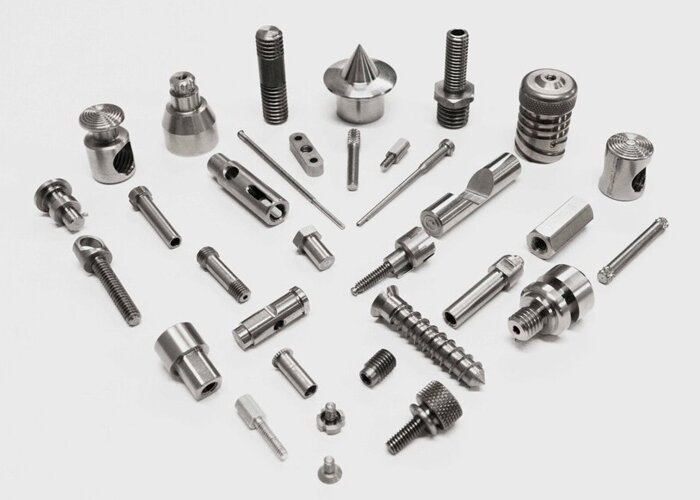
الخصائص الرئيسية للفولاذ المقاوم للصدأ 304
يحظى الفولاذ المقاوم للصدأ 304 بتقدير كبير لمتانته وقوته ومقاومته للعناصر المختلفة. سنستكشف هنا بعض الخصائص الرئيسية التي تجعله مناسباً للاستخدامات المتعددة.
المقاومة للتآكل
يخلق الكروم الموجود في 304 درع أكسيد شفاف على السطح. يمنع هذا الحاجز الطبيعي الصدأ والتآكل من مهاجمة المعدن الموجود تحته. وعند حدوث خدوش، يقوم الدرع بإصلاح نفسه من خلال التفاعل مع الأكسجين الموجود في الهواء.
المتانة والقوة
يُظهر الفولاذ المقاوم للصدأ 304 قوة ملحوظة في كل من الغرف ودرجات الحرارة العالية. وبفضل قوة الشد التي تبلغ 515 ميجا باسكال وقوة الخضوع التي تبلغ 205 ميجا باسكال، فإنه يقاوم الصدمات مع الحفاظ على شكله تحت الضغط.
مقاوم للحرارة
يعمل هذا المعدن بشكل جيد في درجات الحرارة القصوى من -196 درجة مئوية إلى 800 درجة مئوية. فهو يحافظ على قوته حتى عند تسخينه، ويرفض الالتواء أو الانحناء تحت الضغط الحراري.
طبيعة غير تفاعلية
يبقى 304 مستقرًا في معظم البيئات، ويرفض الصدأ أو التآكل في الاستخدام العادي. لا يضيف هذا المعدن أي طعم أو رائحة للأطعمة والمشروبات، ويمكن لمعظم المواد الكيميائية أن تلمس سطحه دون أن تسبب أي ضرر.
النداء الجمالي
يضفي هذا المعدن مظهراً احترافياً نظيفاً واحترافياً على أي مشروع. سطحه يأخذ ملمعًا لامعًا يدوم لسنوات. التنظيف يحتاج فقط إلى الماء والصابون لإزالة الأوساخ والأتربة.
التطبيقات الشائعة للفولاذ المقاوم للصدأ 304
ينتشر الفولاذ المقاوم للصدأ 304 في كل مكان بسبب تعدد استخداماته. وفيما يلي بعض الاستخدامات الشائعة:
الاستخدامات الصناعية
- معدات المعالجة الكيميائية: يقاوم المواد المسببة للتآكل.
- الأنابيب والأنابيب: مثالية لنقل السوائل في البيئات القاسية.
- المكونات الهيكلية: تُستخدم في العوارض والإطارات والدعامات نظراً لقوتها.
صناعة المواد الغذائية والمشروبات
- أدوات المطبخ: تستفيد الأحواض وأسطح العمل والأواني من نظافتها ومقاومتها للتآكل.
- ماكينات تجهيز الأغذية: يضمن السلامة بفضل سطحه غير التفاعلي.
التطبيقات المعمارية
- العناصر الزخرفية: كما أن جاذبيتها الجمالية تجعلها مناسبة للواجهات والمنحوتات.
- الهياكل الخارجية: تقاوم العوامل الجوية في الجسور والممرات.
المجالات الطبية والسيارات
- الأدوات الطبية: تتطلب إبر الحقن تحت الجلد والأدوات الجراحية الدقة ومقاومة التآكل.
- قطع غيار السيارات: تُستخدم في الزخرفة وأنظمة العادم لقوة التحمل.
الاختلافات بين 304 ودرجات الفولاذ المقاوم للصدأ الأخرى
فيما يلي مقارنة بين الفولاذ المقاوم للصدأ 304 ودرجات الفولاذ الشائعة الأخرى. يوضح هذا الجدول الاختلافات الرئيسية في التركيب والخصائص والاستخدامات الشائعة.
| الملكية | 304 الفولاذ المقاوم للصدأ | 201 فولاذ مقاوم للصدأ | 316 فولاذ مقاوم للصدأ | 430 الفولاذ المقاوم للصدأ |
|---|---|---|---|---|
| محتوى الكروم | 18-20% | 16-18% | 16-18% | 16-18% |
| محتوى النيكل | 8-10.5% | 3.5-5.5% | 10-14% | 0-0.75% |
| محتوى الكربون | الحد الأقصى 0.08% | 0.15% كحد أقصى | الحد الأقصى 0.08% | 0.12% كحد أقصى |
| المقاومة للتآكل | ممتاز | معتدل (أقل مقاومة) | ممتاز (بسبب الموليبدينوم) | مقبول (أقل مقاومة للتآكل) |
| قابلية اللحام | جيد | عادل (يمكن أن يكون اللحام أصعب) | جيد (يحتاج إلى عناية في الظروف البحرية) | رديء (عرضة للصدأ والتآكل) |
| قوة | عالي | متوسط (قوام أقل) | عالية (جيدة للاستخدام البحري) | معتدل (أضعف من 304) |
| مقاوم للحرارة | حتى 870 درجة مئوية (1600 درجة فهرنهايت) في الاستخدام القصير | حتى 870 درجة مئوية (1600 درجة فهرنهايت) | حتى 870 درجة مئوية (1600 درجة فهرنهايت) في الاستخدام القصير | حتى 815 درجة مئوية (1500 درجة فهرنهايت) |
| التطبيقات | الاستخدام العام، والغذاء، والطبي، والطبي | أجهزة مطبخ صديقة للميزانية | بحري وكيميائي وطبي | السيارات، والأجهزة، والمناطق غير المسببة للتآكل |
| الخواص المغناطيسية | غير مغناطيسي | مغناطيسية (يمكن أن تكون مغناطيسية قليلاً) | غير مغناطيسي | مغناطيسي |
لحام وتصنيع الفولاذ المقاوم للصدأ 304
يُستخدَم الفولاذ المقاوم للصدأ 304 على نطاق واسع في اللحام والتصنيع نظرًا لقابليته الممتازة للحام والتشكيل. فيما يلي نظرة عامة على كيفية لحام وتصنيع الفولاذ المقاوم للصدأ 304.
لحام الفولاذ المقاوم للصدأ 304
304 الفولاذ المقاوم للصدأ 304 قابل للحام بدرجة كبيرة بسبب محتواه المنخفض من الكربون وتكوينه المتوازن من السبائك. ومع ذلك، من المهم استخدام تقنيات اللحام الصحيحة لتجنب مشاكل مثل التشويه أو التشقق أو ضعف المادة. تتضمن طرق اللحام الشائعة المستخدمة في الفولاذ المقاوم للصدأ 304 ما يلي:
- تيج لحام: هذه هي الطريقة الأكثر شيوعًا للحام الفولاذ المقاوم للصدأ 304. وهي توفر لحاماً نظيفاً وعالي الجودة بأقل قدر من الترشيش. لحام TIG مثالي للأقسام الرقيقة والتطبيقات الدقيقة.
- لحام ميغ: يُستخدم لحام MIG أيضًا في لحام الفولاذ المقاوم للصدأ 304، خاصةً المقاطع السميكة. إنه أسرع من لحام TIG، على الرغم من أنه قد لا يوفر تشطيبًا نظيفًا.
- لحام العصا: يعتبر اللحام بالعصا أقل شيوعًا بالنسبة للفولاذ المقاوم للصدأ، ولكن لا يزال من الممكن استخدام اللحام بالعصا في بعض التطبيقات، خاصة في الظروف الخارجية أو الميدانية. يجب اختيار القطب المناسب لمنع التلوث وضمان وجود رابطة قوية.
تقنيات التصنيع
بمجرد اللحام، يمكن تصنيع الفولاذ المقاوم للصدأ 304 في منتجات وهياكل مختلفة. يتضمن التصنيع قطع المادة وثنيها وتشكيلها بالشكل المطلوب. وتشمل تقنيات التصنيع الشائعة ما يلي:
- القطع بالليزر: يوفر القطع بالليزر دقة عالية وحواف نظيفة. يستخدم لقطع صفائح وألواح الفولاذ المقاوم للصدأ والألواح والأشكال المسطحة الأخرى.
- التصنيع باستخدام الحاسب الآلي: غالبًا ما تستخدم الماكينات بنظام التحكم الرقمي للأشكال الأكثر تعقيدًا أو الملامح التفصيلية. ويمكنها إنشاء قطع وأشكال دقيقة وهي مفيدة للإنتاج بكميات كبيرة.
- تشكيل: يمكن ثني الفولاذ المقاوم للصدأ 304 وتشكيله باستخدام مكابح الضغط أو آلات التشكيل الأخرى. وهو يحافظ على قوته وقابليته للتشكيل بعد الثني، مما يجعله مناسباً لصنع أجزاء مثل الأقواس والألواح والحاويات.
- ختم: يُستخدم الختم لإنشاء أجزاء عالية الدقة من صفائح الفولاذ المقاوم للصدأ. وهو ينطوي على استخدام قالب لقطع المادة أو تشكيلها أو ثقبها في أشكال محددة.
خاتمة
304 الفولاذ المقاوم للصدأ 304 مادة متعددة الاستخدامات ومستخدمة على نطاق واسع ومعروفة بمقاومتها الممتازة للتآكل، وقوتها العالية، وقابليتها الجيدة للحام. وهو مثالي للعديد من التطبيقات، بما في ذلك معالجة الأغذية والمعدات الطبية والتصنيع العام. قدرته على مقاومة الصدأ وتحمل درجات الحرارة العالية تجعله مناسبًا لمختلف الصناعات.
إذا كنت بحاجة إلى صفائح معدنية عالية الجودة من الفولاذ المقاوم للصدأ 304 لمشروع التصنيع التالي، فنحن هنا لمساعدتك. اتصل بنا اليوم للحصول على مشورة الخبراء وحلول الصفائح المعدنية الدقيقة المصممة خصيصًا لتلبية احتياجاتك. تواصل معنا للحصول على عرض أسعار أو مزيد من المعلومات!
مهلا، أنا كيفن لي

على مدى السنوات العشر الماضية، كنت منغمسًا في أشكال مختلفة من تصنيع الصفائح المعدنية، وشاركت رؤى رائعة هنا من تجاربي عبر ورش العمل المتنوعة.
ابقى على تواصل

كيفن لي
لدي أكثر من عشر سنوات من الخبرة المهنية في تصنيع الصفائح المعدنية، وتخصصت في القطع بالليزر، والثني، واللحام، وتقنيات معالجة الأسطح. كمدير فني في شنغن، أنا ملتزم بحل تحديات التصنيع المعقدة ودفع الابتكار والجودة في كل مشروع.

